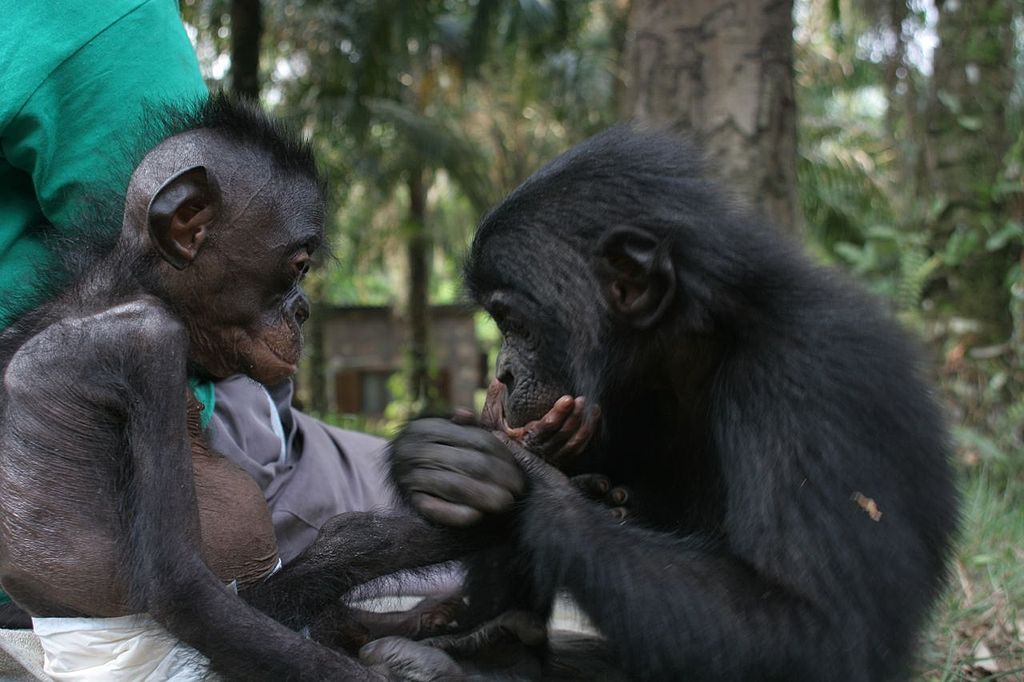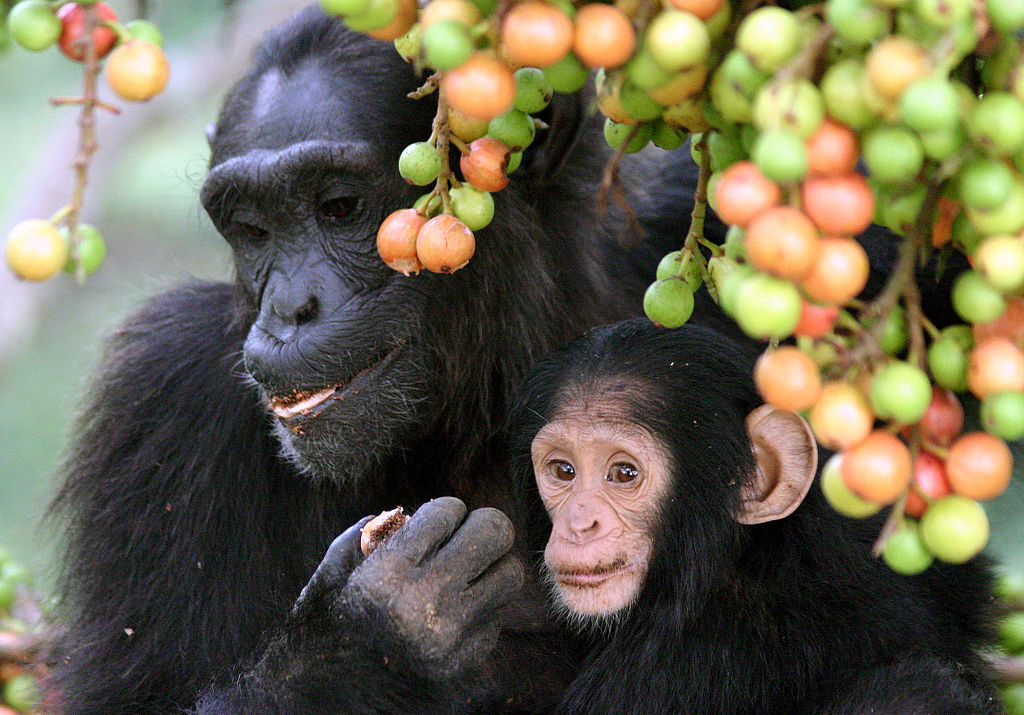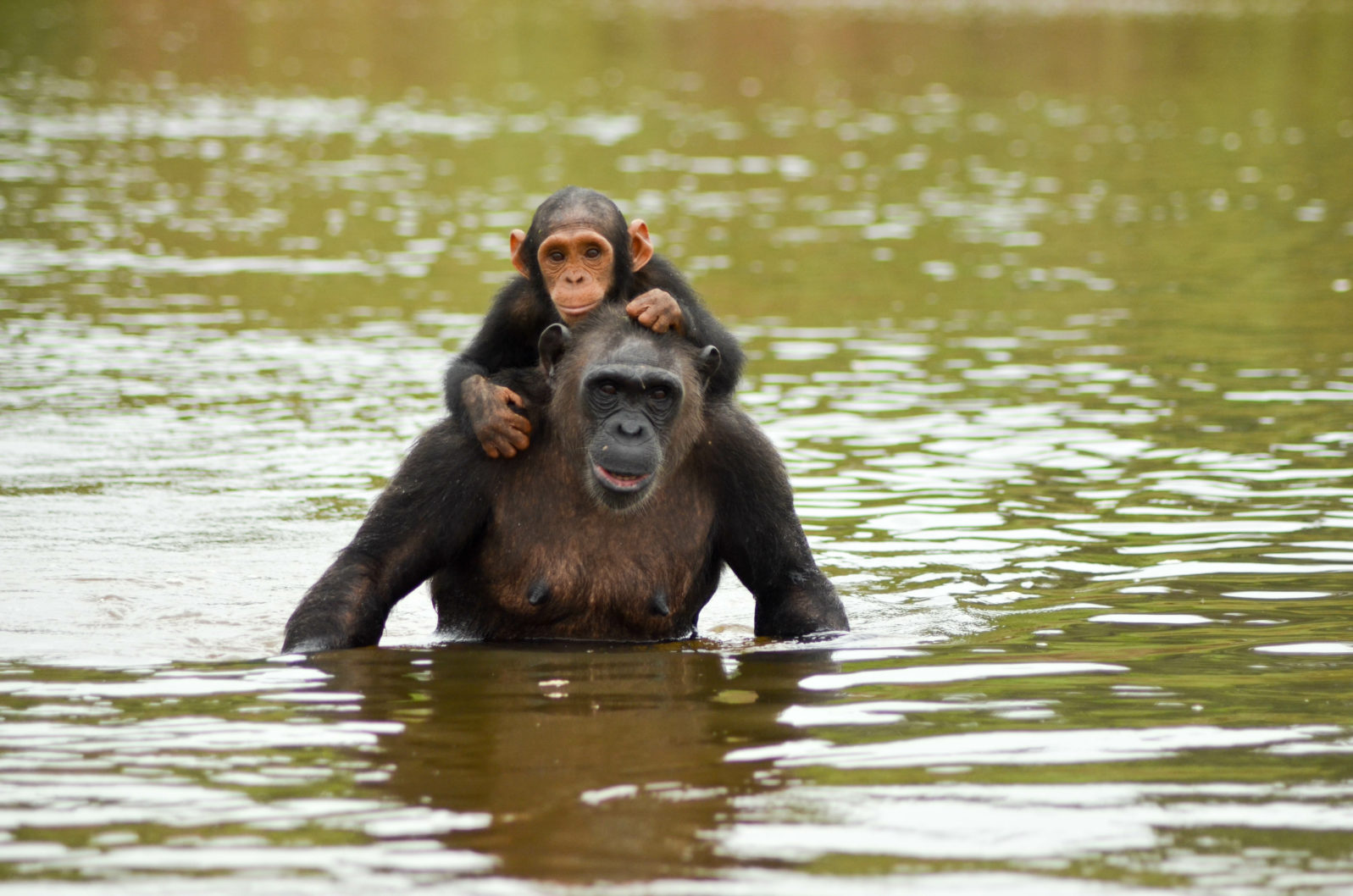Does a Chimp Mom Who Carries a Dead Baby Around Understand Death?
In a recent study of primate mothers, researchers imply that their behavior shows a growing awareness of the nature of deathThat is a trickier question than it first seems. Researchers looked into the habit some primate moms have of carrying a baby who has died, sometimes for months:
Published today in Proceedings of the Royal Society B, the researchers compiled data from anecdotes reported in 126 publications on primate behaviour. In the largest study of its kind, researchers undertook the most extensive and rigorous quantitative analysis to date of a behaviour known as “infant corpse carrying” in primate mothers, looking at 409 cases across 50 species.
While there is debate among scientists around whether primates are aware of death, this new study suggests that primate mothers may possess an awareness — or be able to learn about death over time.
Study co-author Dr Alecia Carter (UCL Anthropology) said: “Our study indicates that primates may be able to learn about death in similar ways to humans: it might take experience to understand that death results in a long-lasting “cessation of function”, which is one of the concepts of death that humans have. What we don’t know, and maybe will never know, is whether primates can understand that death is universal, that all animals — including themselves — will die.
University College London, “Primate mothers may carry infants after death as a way of grieving, study finds” at ScienceDaily (September 14, 2021)
Whoa. Wait. Humans understand death as an abstraction that comprises a number of separate facts, including that it is not merely a “long-lasting ‘cessation of function.’” That would be coma or paralysis.
The point about death — as a human understands it — is that the deceased loved one is never coming back. That is why human mothers do not carry a dead baby around for months. The primates’ behavior definitely demonstrates grief in the sense of attachment but also makes clear that they don’t understand what death means.

An iconic example of this dilemma is the faithful Japanese dog Hachikō. For many years after his master had died, he went down to the train station every evening to await his return. The story is touching in part because Hachikō’s could not know that his human friend had actually died. Such faithfulness is inspiring but it is not evidence that the life form understands what death is. In these examples, it implies the opposite.
The University College researchers and colleagues add,
“Our study also has implications for what we know about how grief is processed among non-human primates. It’s known that human mothers who experience a stillbirth and are able to hold their baby are less likely to experience severe depression, as they have an opportunity to express their bond. Some primate mothers may also need the same time to deal with their loss, showing how strong and important maternal bonds are for primates, and mammals more generally.”
University College London, “Primate mothers may carry infants after death as a way of grieving, study finds” at ScienceDaily (September 14, 2021)
People who care for primates should keep their emotional needs in mind. But understanding death means processing abstractions like “never” and “forever.” The behavior described demonstrates grief without demonstrating awareness of death, as humans understand it.
Overall, 80% of primate species in the literature survey study carried dead offspring around. The researchers note that great apes and Old World monkeys were more likely to carry dead infants around and to do so for longer periods. Lemurs, who do not carry dead infants around, expressed grief “through other behaviours, such as returning to the corpse or giving ‘mother-infant contact calls.’”
Does the lemur, for that matter, understand that the infant is dead? She doesn’t know anything she can do other than try to arouse her offspring. So she probably goes on doing that until she is tired and just gives up. That doesn’t mean she isn’t grieving, of course. Grief is quite common among intelligent animals. But is not the same thing as understanding that death is inevitable and irrevocable.

The researchers also found that younger primate mothers were more likely to carry dead infants and that deaths from illness were more likely to result in corpse-carrying than deaths from infanticide or accident. Also, the youngest infants were carried longest, “with a sharp decline when they reached approximately half the weaning age.”
Study co-author Elisa Fernández Fueyo (UCL Anthropology) said: “We show that mothers that were more strongly bonded to their infant at death carry the corpse for longer, with emotions possibly playing an important role. However, our study also shows that, through experience with death and external cues, primate mothers may gain better awareness of death and therefore ‘decide’ not to carry their dead infant with them, even if they may still experience loss-related emotions.
University College London, “Primate mothers may carry infants after death as a way of grieving, study finds” at ScienceDaily (September 14, 2021)
It’s probably true that experience with infant death teaches the primate mother that carrying the deceased offspring around will not help. But that doesn’t mean she has a general theory of death.
Then Elisa Fernández Fuego offers a right-off-the-cliff speculation:
“We found that bonds, particularly the mother-infant bond, possibly drive primates’ responses to death. Because of our shared evolutionary history, human social bonds are similar in many ways to those of non-human primates. Therefore, it is likely that human mortuary practices and grief have their origins in social bonds. The thanatological behaviours that we see in non-human primates today may have been present in early human species as well — and they may have transformed into the different rituals and practices during human evolution.
University College London, “Primate mothers may carry infants after death as a way of grieving, study finds” at ScienceDaily (September 14, 2021)
The (very) little information we have about the attitudes to death of “early human species” shows ancestors who buried their dead with some care. See “Child grave from 80,000 years ago shows abstract thinking.” The interment included a giant land snail shell with incision markings, possibly standing for some information about the deceased. While we can’t know at this date what the mourners understood about the child’s death, they appear to have understood death in a human way — and that is a different matter from the inability to comprehend loss or simply expressing grief over it.
Note: The paper is restricted access.
You may also wish to read:
Can animal minds rival humans under the right circumstances? Are we just not being fair to animals, as some researchers think? Including apes as co-authors on a primatology research paper created quite a stir—among humans.
The real reason why only human beings speak. Language is a tool for abstract thinking—a necessary tool for abstraction—and humans are the only animals who think abstractly. (Michael Egnor)
Researchers: Apes are just like us. And we’re not doing the right things to make them start behaving that way… In 2011, we were told in Smithsonian Magazine, “‘Talking’ apes are not just the stuff of science fiction; scientists have taught many apes to use some semblance of language.” Have they? If so, why has it all subsided? What happened? (Denyse O’Leary)
and
Do animals truly grieve when other animals die? Yes, but “death” is, in some ways, an abstraction so there are only some things they understand about it. For example, the dog Hachikō’s lifelong devoted vigil at the train station is touching in part because he could not know that his human friend had actually died. (Denyse O’Leary)
